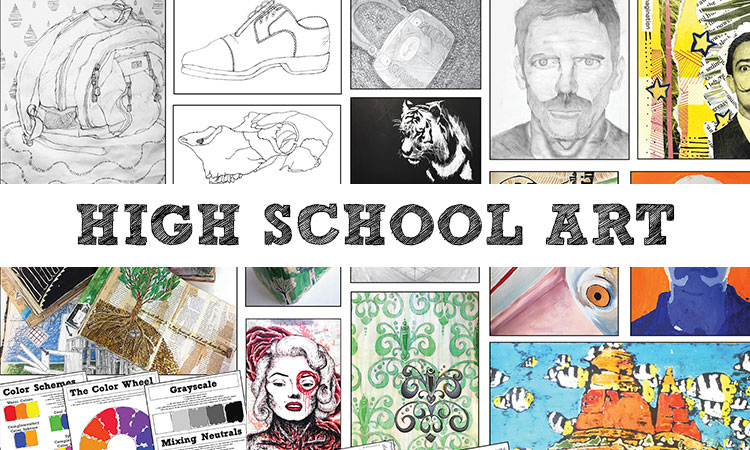
Designing an introduction to art curriculum takes time and effort. I recently shared a blog post on creating a middle school art curriculum and an elementary art curriculum, check it out if you need inspiration for younger students. I typically use the elements of art and principles of design as I develop art classes for younger grade levels. However, a high school art curriculum is much more complex. While the elements of art and principles of design still play a major role, the focus shifts to developing specific techniques and preparing students for other art classes.
With all art classes, scaffolding techniques are key. You want to build confidence in students before moving to the next technique. With high school art, you have to look at scaffolding beyond a single course but as a program on the whole. I plan to write a post on developing a high school art program, looking at how courses work together. But, for this post, I want to focus on building an art curriculum for an intro-level art or art 1 class. You must always start at the bottom and work up when creating an art program.
INTRO TO ART COURSE
In an introduction to art curriculum, it’s best to assume students have had zero art for a few years. Plan to cover the basics, but allow projects to be open-ended enough so advanced art students can push themselves. Start with the art basics and build on them. You can check out my intro to art curriculum (it includes everything I will be discussing in this blog post) on my TPT or on my website shop.
Rather than use the elements of art and principles of design to guide my intro high school art curriculum, I focus on drawing skills, color theory and painting skills, and mixed media. They learn new techniques, build on them, and then combine them.
ART NOTEBOOK
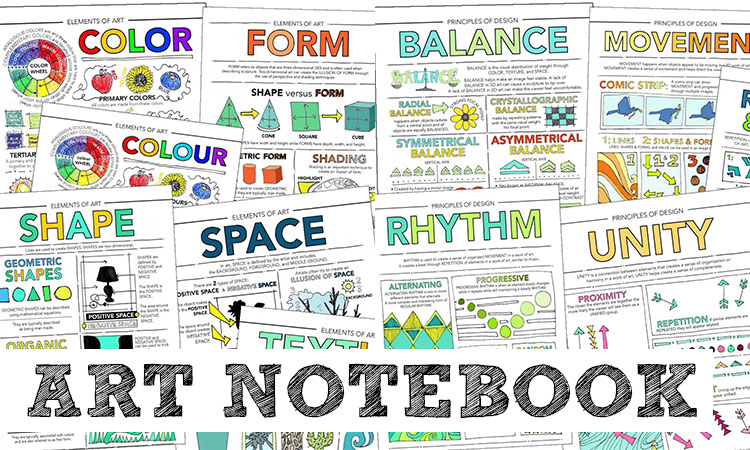
Before we begin our first drawing activity, students staple together two pieces of poster board to create a portfolio. They must also bring in a 1″ 3-ring binder. The first couple of days are spent decorating the portfolio and cover for the binder. These will help keep art students organized during the class.
Because I teach many basic techniques in this class there is a mix between quick activities and long projects. The quick activities are kept in their art notebook. Students review the elements of art and principles of design by completing handouts. They do quick drawings, project sketches, critique reflections, and more in this notebook.
You can read the details of what’s included in this on my TPT or on my website.
INTRODUCTION TO DRAWING
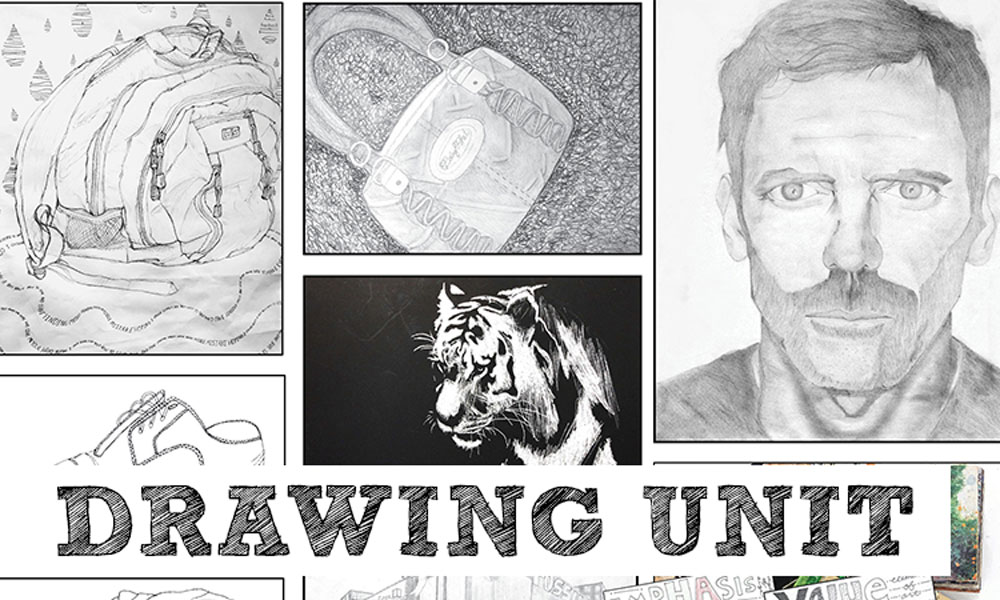
The first unit in my introduction to art curriculum is drawing. This primarily consists of pencil and paper, at least for the first few lessons. Students start with upside-down drawings, basic contour line drawings, practicing shading basics, and then putting everything together into a grid drawing portrait project. We finish the unit with perspective activities and the traditional perspective project, creating a city block. Check out a breakdown of the projects below:
CONTOUR LINE UNIT
- Upside down drawings
- Face/Vase activity
- Blind contour drawings
- Quick contour drawings
- Skull contour line drawing on larger paper
- Shoe contour line drawing on larger paper
- The Things They Carry contour backpack project
Check out this unit on my TPT here
SHADING UNIT
- 3 shading activities to review and teach shading basics
- 2 line quality activities
- Object drawing with shading and line quality added to the background
- Animal-focused scratchboard project (scratchboard is great for testing understanding of hatching, cross-hatching, and stippling)
Check out this unit on my TPT here
GRID DRAWING UNIT
- 2 grid drawing introduction activities
- Collaborative grid drawing project
- Hero portrait drawing using the grid and shading techniques
Check out this unit on my TPT here or on my website here.
PERSPECTIVE UNIT
- One point perspective activity
- Draw your name in perspective activity
- Two-point perspective activity
- City block, two-point perspective project
Check out this unit on my TPT here or on my website here.
This wraps up the drawing portion of my introduction to art curriculum. This can take anywhere from a third to half of the course, in a year-long course, depending on how often you see students and how quickly they work.
INTRO TO SCULPTURE LESSON
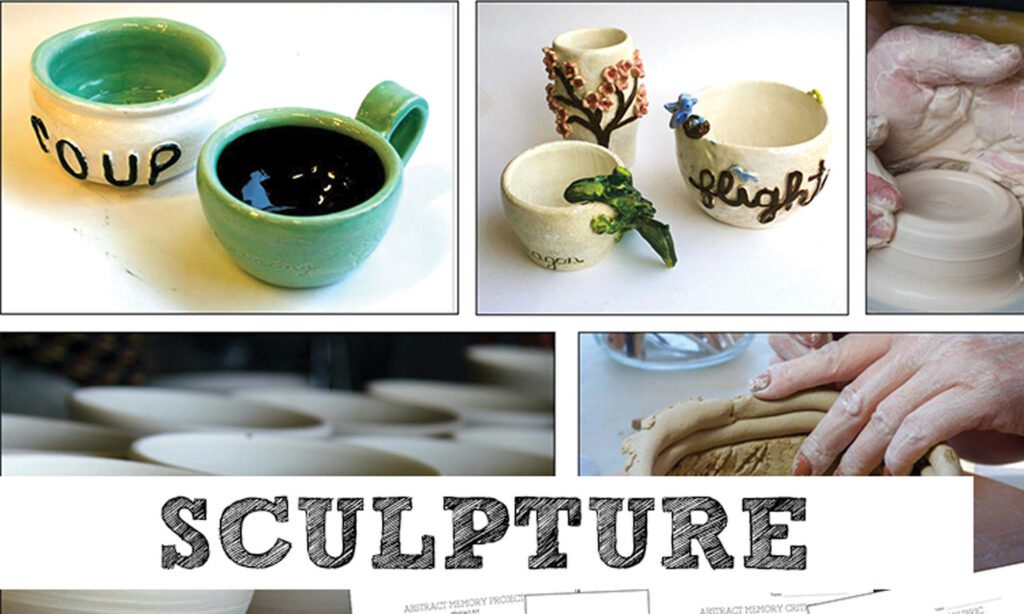
In an introduction to art curriculum, it’s important to cover all types of art, including sculpture. I believe sculpture should be as large a part of a curriculum as drawing, painting, and mixed media, but often due to class sizes and budget it ends up being one lesson. I try to squeeze as much into this lesson as possible, students create 3 bowls using 3 different hand-building techniques: pinch pot, coiling, and building with slabs. Once they construct their bowls they are free to carve into them, add sculpture details, or glaze them how they want. I want them to push their creativity and for them to have fun.
I like to shift gears to sculpture after drawing because drawing is so technical. It’s nice to loosen up with clay before starting color theory and painting. Check out this lesson on my TPT here.
INTRO TO PAINTING UNIT
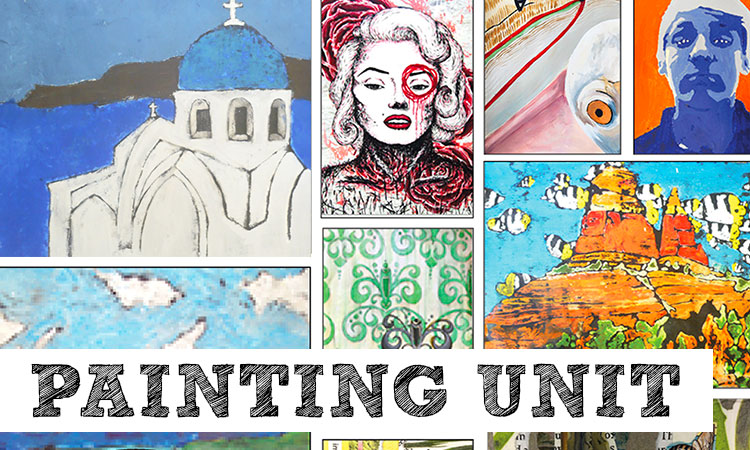
Next in my introduction to art curriculum is painting. Color theory is an important art basic to teach, and it pairs well with painting lessons. I focus on teaching color theory first, before having students apply color schemes to a larger project. Next, we move from realism to an introduction to abstract art and color mixing with a color-matching project. At this point, students should have the hang of basic painting techniques and are ready for a longer landscape painting. To finish off the unit they return to abstract creating a pattern based on a memory, a deep-thinking and technique-heavy project.
Check out details on these lessons below:
- Color theory introduction: An in-depth look at color theory through PowerPoints and 3 color mixing activities. Check it out on my TPT here.
- Color Schemes and Selfies: A selfie project focused on using a color scheme to paint a posterized image.
- Abstract Color Matching: Creating an abstract design by using a viewfinder to find an interesting composition in a magazine. Students must mix paint to match the colors.
- Landscape Tempera Batik: Students create a landscape painting leaving gaps between shapes. The gaps are stained with India ink using a tempera batik process.
- Abstract Memory: Students transform an object used to reflect a memory into an abstract design. The design is repeated to create a pattern and painted using a color scheme.
You can get my painting unit on my TPT.
MIXED MEDIA UNIT
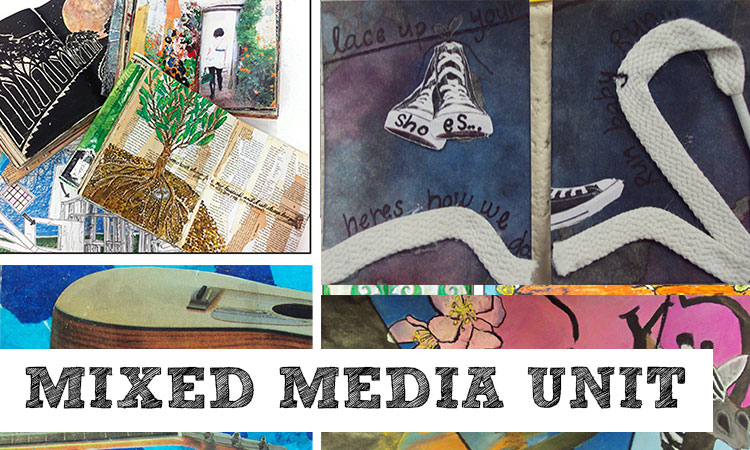
The final piece of my introduction to art curriculum is the mixed media unit. This is fairly short, with just two projects and one project that continues throughout the semester, but it brings all the techniques together.
In all of my classes, students are introduced to visual journals. We work on them every Friday as a break from projects. They start this on the first or second Friday of the course and continue until the end. The number of pages due depends on the number of Fridays they had in class. Because of this, they are introduced to the concept of mixed media early on. It’s incredible to see the growth in students as they learn to bring different materials together in this project. Read more about visual journals in a blog post here.
Other than visual journals, the first official project is artist trading cards. This is easily one of my student’s favorite projects. They create 10-12 mini works of art that measure 2.5″x3.5″ they have the opportunity to trade their tiny works of art after the critique. Check out this lesson on my website or on my TPT.
Last but not least students get to design their final project creating a work of art in the style of an artist of their choice. They choose the subject, material, and style. I love seeing what they create and they often use mixed media in these final pieces.
IT ALL COMES TOGETHER
After completing this intro to art class students have an understanding of contour lines, shading, portrait drawing, working with clay, color theory, landscape painting, portrait painting, abstract art, and mixed media. This prepares them for the next art class they take whether it is drawing, painting, sculpture, or a combination. If students continue on to a digital art or photography class they have the basics of color and composition down, ready to apply to their projects. Remember, to set students up for success you need to start with the basics and slowly build on them. Allow students time to practice and build confidence before jumping into a long project.
Don’t forget you can hit the easy button and get everything included in this blog post in my intro to art bundle on my website here or TPT here.
I hope you have ideas for your next art class and feel more confident in how to scaffold lessons and develop ideas for an introduction to art curriculum. Please reach out with any questions or comments! Don’t forget to follow me on Instagram and TikTok for weekly visual journal demos and other project ideas. Subscribe here to get freebies, project tutorials, and more straight to your inbox. Until next time!

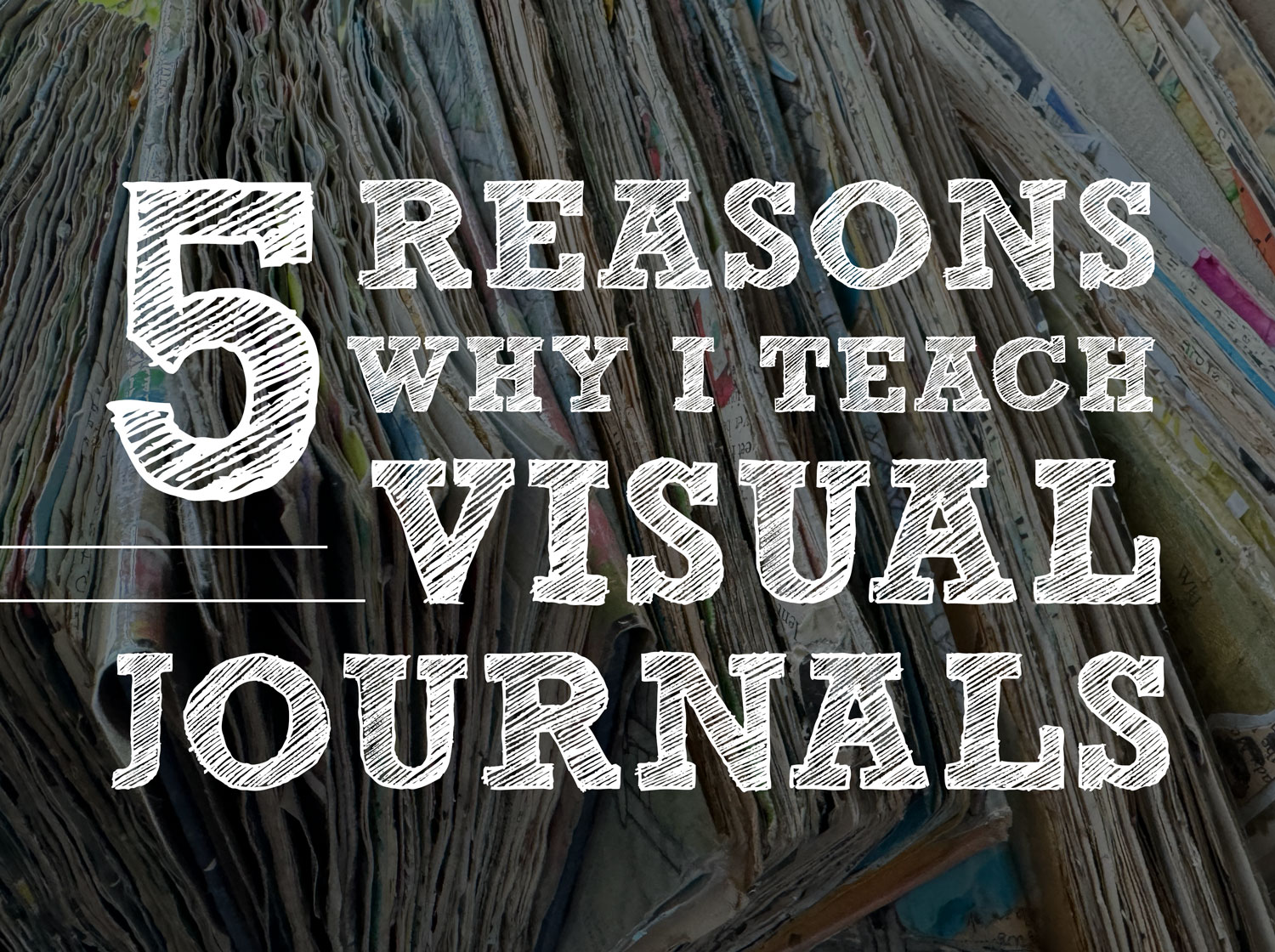

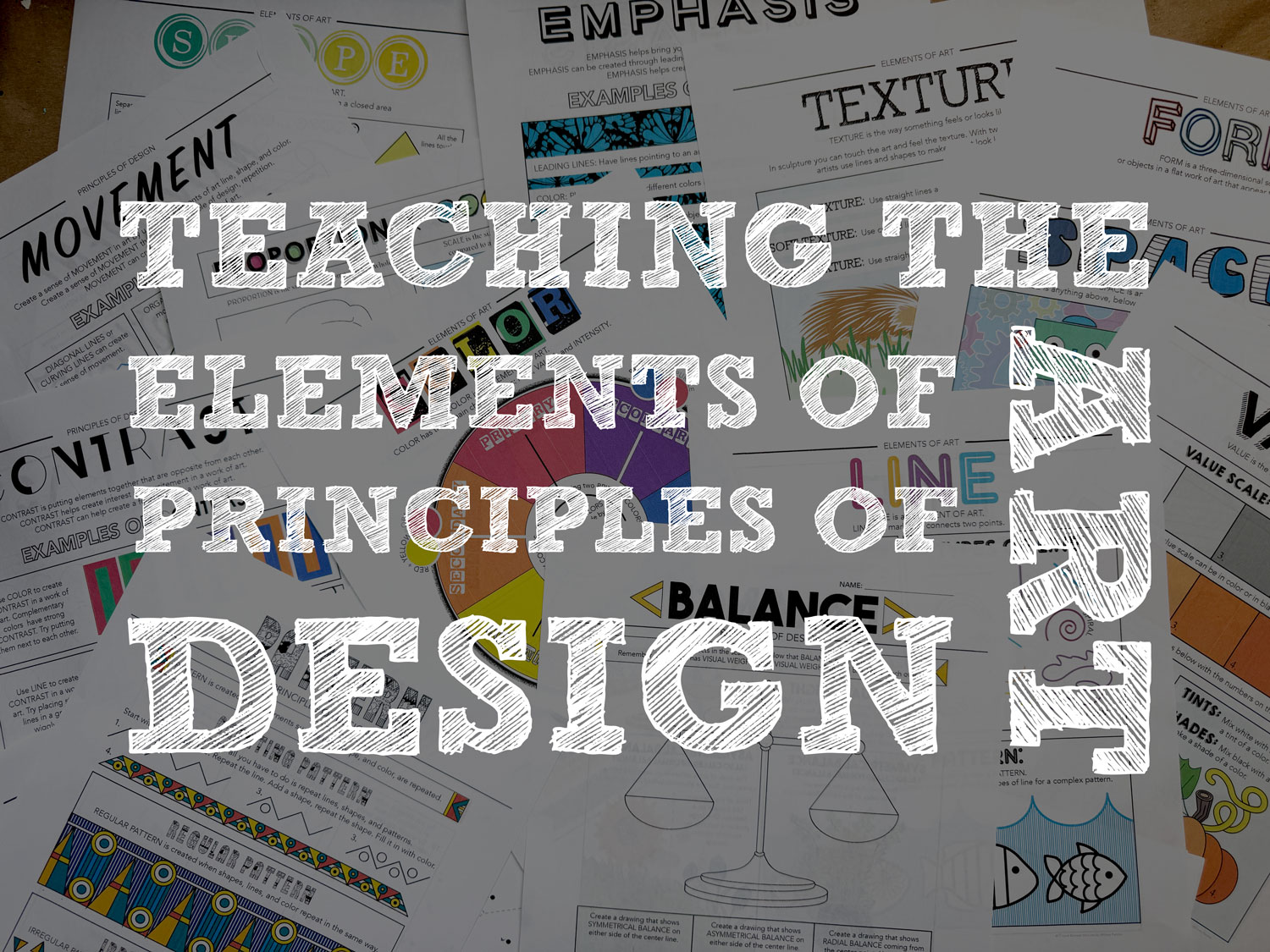
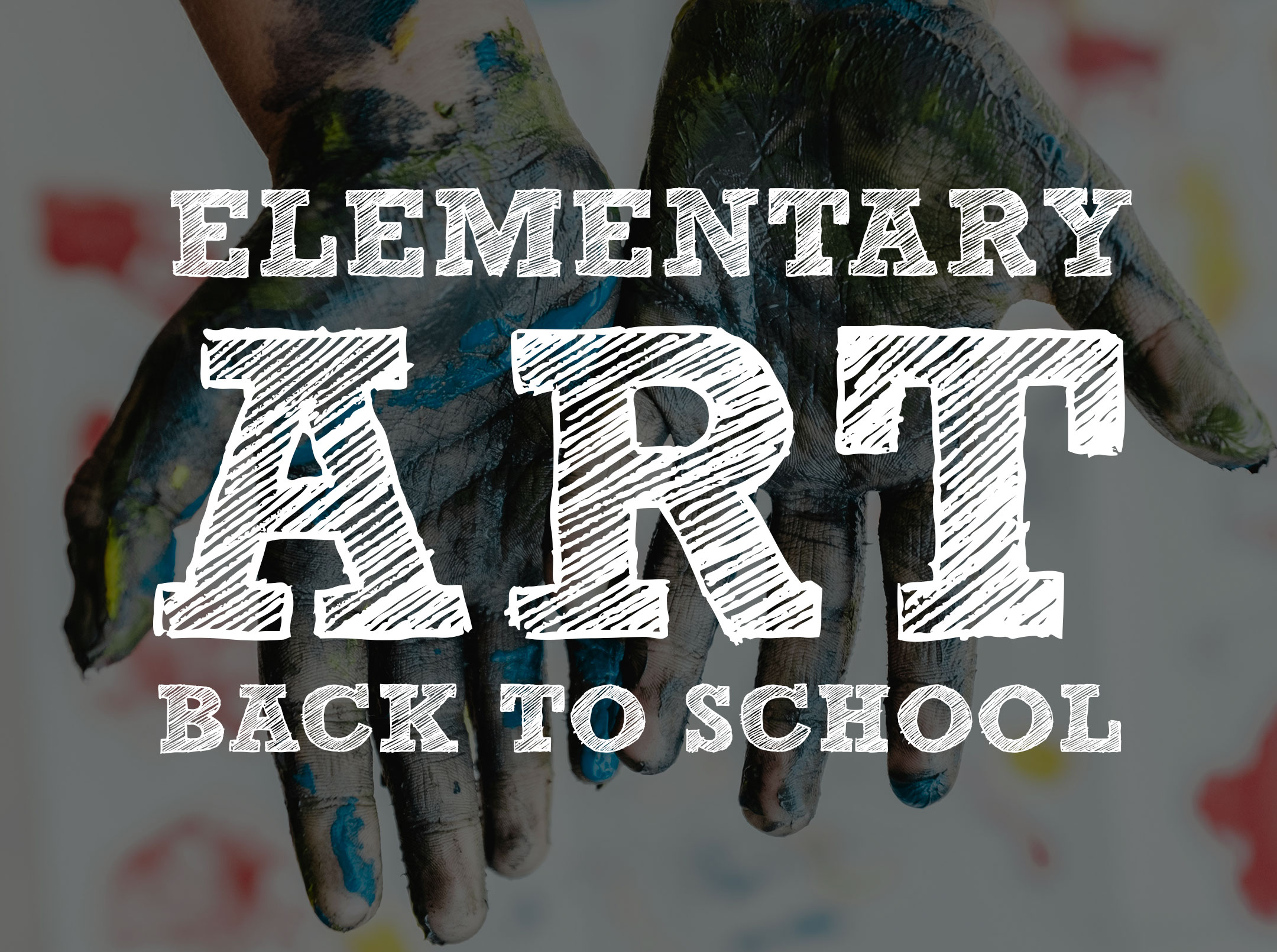
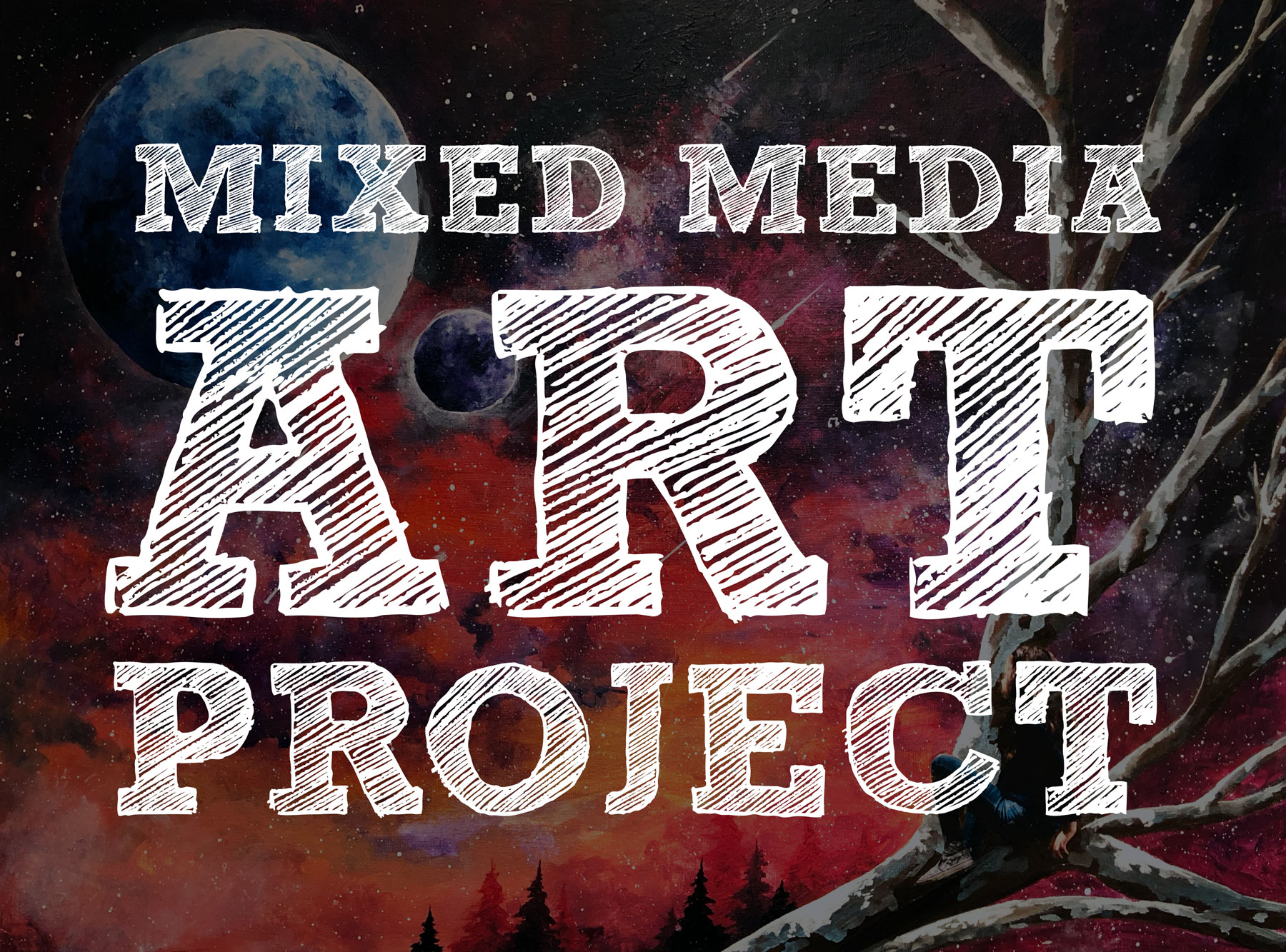
Leave a Reply